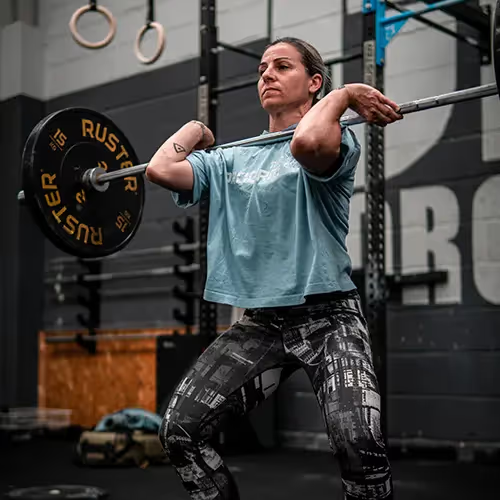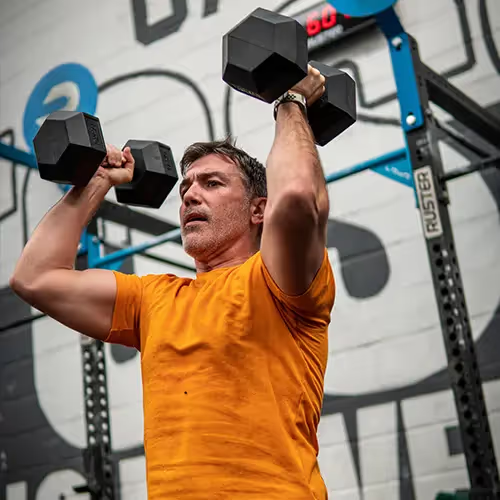Functional Training for Masters Athletes
Training CrossFit for Masters athletes (35+) Looking at a CrossFit gym, you’ll see all different kinds of people but perhaps the most noticeable difference is



Training CrossFit for Masters athletes (35+) Looking at a CrossFit gym, you’ll see all different kinds of people but perhaps the most noticeable difference is


Looking at a CrossFit gym, you’ll see all different kinds of people but perhaps the most noticeable difference is the variation in age.
Even though everyone gets together and does the same workout, not everyone will recover in the same way. Whether we like it or not, our bodies change as we get closer to middle age.
As such, the way we exercise and take care of our bodies should change too.
This is why it's so important to understand what it means to be a Masters athlete.
The term “Masters” is an age-based distinction made within many sports communities. Typically, a Masters athlete is defined as anyone over the age of 35 who participates or competes in sport.
CrossFit recognizes several age categories of athletes, all of which are classified as Masters:
In official events like the CrossFit Games, and the Open, as well as several well-known competitions, it's common to find that adaptations to the workouts are made accommodating these populations.

I was 21 when I started training CrossFit. I remember waking up at 10 a.m. after a night of studying, grabbing a banana and biking to the box. I’d get to box just in time to train with my squad, check out the workout, and head straight over to the bars.
After a few front squats and presses with an empty bar I’d load it up to start looking for a heavy clean and jerk.
My coaches and my classmates who were older than me would always say: “You won’t be able to do that 10 years from now”.
I’d politely laughed it off, or scoff and roll my eyes but with each coming year, I begin to realize that they were right.
The response that I used to give is now the one I receive when I scold my younger athletes for “warming up” the way I did.
The fact of the matter is, in your 20s external factors don't seem to influence you're training as much.
Of course you would be a better athlete if you prioritize nutrition and recovery but at this age, you can more or less eat or drink whatever and as much as you want, top it off with relatively little sleep, and still make some pretty good gains in the gym.
However, (and quite literally), it's only a matter of time before what you do outside the gym begins to affect your training differently.
Additional stress and responsibilities that you have to your work, kids, and other relationships also take their toll, and eat up a lot of your free time.
Getting older is inevitable but it’s nothing to be afraid of. You can still train and make gains but you’re going to have to do so in a way that lends to having a long, healthy career in functional fitness.
Even if you have been active your entire life, at a certain age your body begins to function differently.
Various age-related changes in your physiology make it unrealistic to train like younger athletes.
At the articular level, most adults over 45 will experience some form of chronic joint pain usually from the knees, hips or lower back, shoulders, or neck.
Warming up is vital to prepare these areas to move well and tolerate the stress that is brought on by exercise.
Frequently, training at high volume comes with more risk than with benefit.

Recovery becomes especially important as muscles are slower to recover from working out. This also makes it more likely for Masters athletes to become injured.
Age-related muscle loss tends to occur around the age of 50. Gaining muscle mass can be a challenge but it's not impossible. While our potential to get stronger does decrease as we age, maintaining your strength for as long as possible increases your chances of being mobile and self-sufficient into old age.
Many of these changes are especially noticeable for athletes who participate in high intensity and high impact sports.
You should follow a plan that grows with you just as your body does. A workout routine dedicated to Masters must have extra emphasis on warming up, cooling down, and recovery:

If you are looking to continue on training CrossFit, you'll need one that is conscious of your needs. The Masters Progrm offers buildable, sustainable training that prioritizes longevity in the sport.
This program is designed especially for older athletes who want to improve, work hard, and be challenged without imparting unnecessary wear and tear on their bodies.
Age is not just a number, but it shouldn't be an obstacle either.